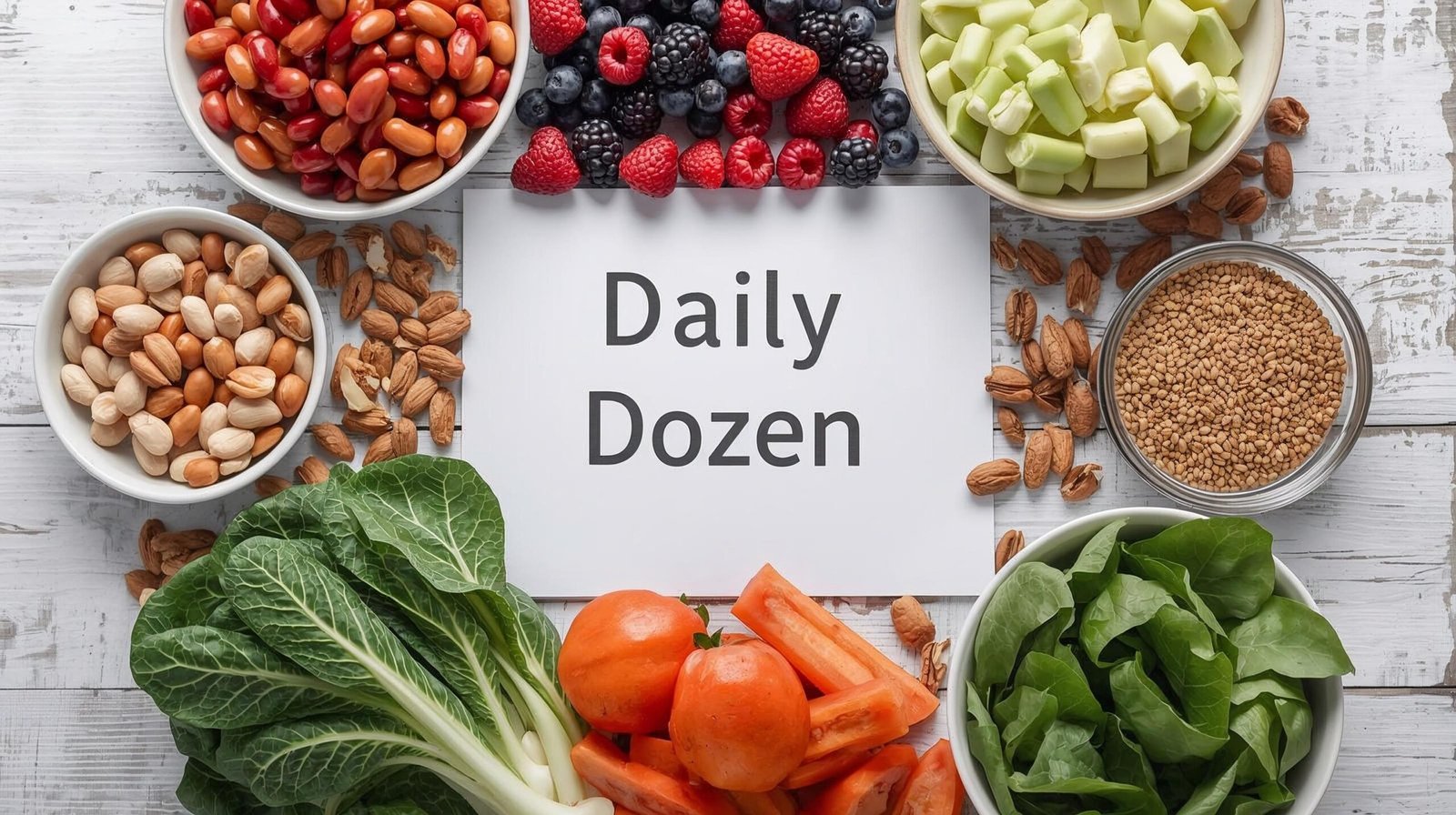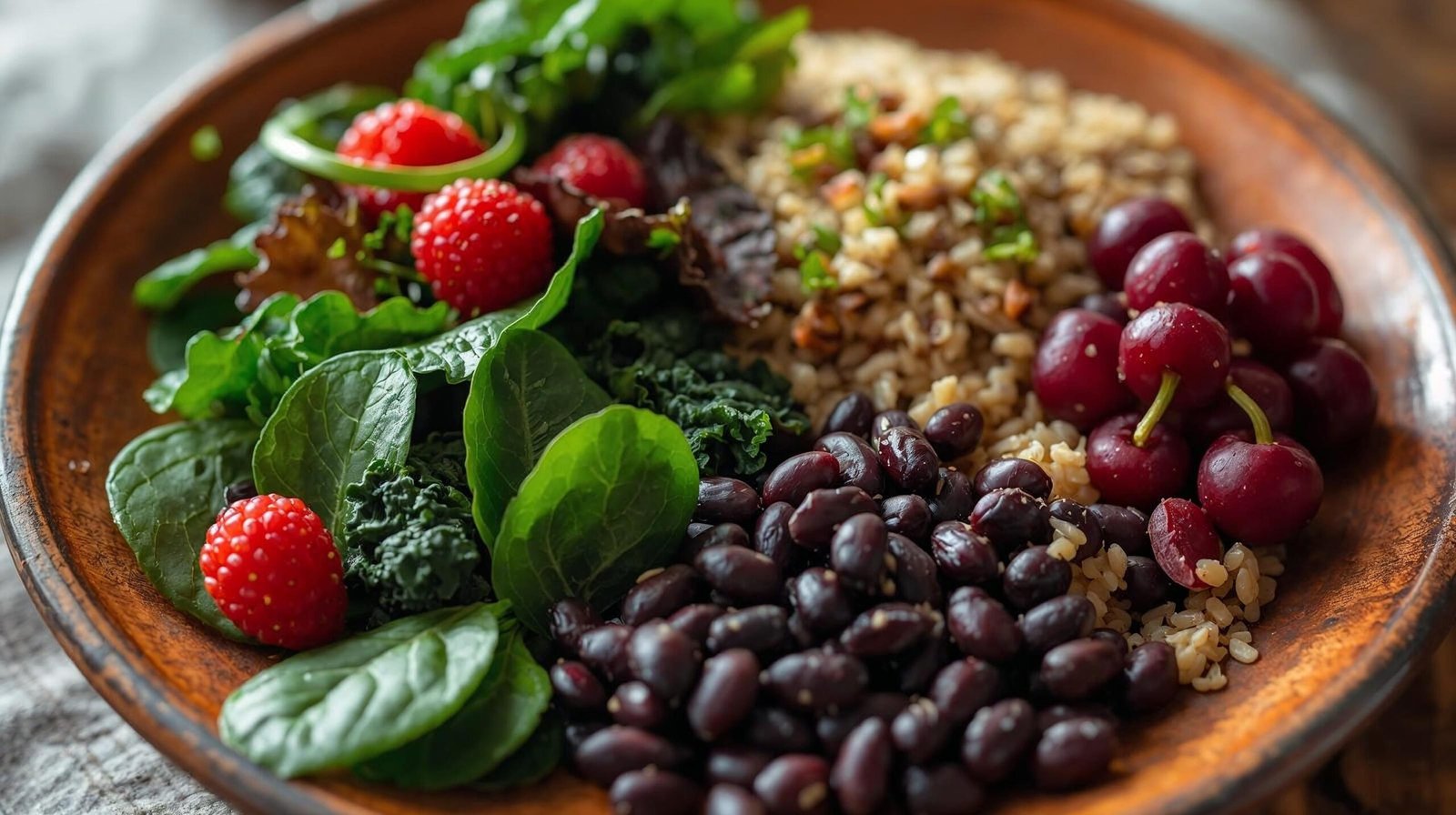How Not to Die Summary: 11 Life-Saving Lessons from Dr. Michael Greger’s Groundbreaking Guide to Longevity
Introduction
The How Not to Die summary captures the essence of one of the most influential books on health and nutrition ever written. Dr. Michael Greger’s How Not to Die is not merely a guide—it is a revolutionary manifesto on how to live a longer, disease-free life through the power of whole plant-based foods. Unlike many self-help or diet fads, this book stands on a solid foundation of peer-reviewed science, challenging conventional notions of medicine and lifestyle.
The author, Dr. Greger, is a physician renowned for his evidence-based approach to nutrition. His argument is profound yet simple: most of the leading causes of premature death—heart disease, cancer, diabetes, and other chronic conditions—can be prevented or even reversed through diet and lifestyle modification. In this comprehensive how not to die summary, we explore the eleven life-saving lessons that can transform not only your health but also your outlook on life itself.

1. The Premise of “How Not to Die” – Food as Medicine
Dr. Greger begins with an urgent observation: we are dying from diseases that need not exist. Heart disease, stroke, and diabetes—these are not inevitable outcomes of aging but consequences of lifestyle choices. The how not to die summary asserts that the human body has immense regenerative potential when nourished properly.
Greger’s message is clear—medicine treats symptoms, but food addresses causes. The author introduces the concept of the Daily Dozen, a checklist of twelve food categories, such as beans, berries, cruciferous vegetables, and whole grains, which together form a nutritional foundation for optimal health. This daily routine acts as a shield against disease, reinforcing the body’s natural defenses.
2. The Leading Killers and Their Preventable Nature
One of the most shocking revelations in this how not to die summary is that the top fifteen causes of death are largely preventable. Dr. Greger systematically examines each cause—heart disease, lung disease, brain diseases, digestive cancers, infections, diabetes, and more—revealing how dietary intervention can dramatically reduce their risk.
For instance, heart disease, the number one killer, is described not as a consequence of genetics but of lifestyle. By adopting a whole-food, plant-based diet, arterial plaques can regress, cholesterol levels can normalize, and inflammation can subside. The evidence is irrefutable and deeply empowering.
3. The Power of Whole Plant-Based Foods
Central to the how not to die summary is the concept of consuming foods as close to their natural state as possible. Processed foods, refined sugars, and animal fats are linked to inflammation and oxidative stress—two major culprits behind chronic disease. Conversely, unrefined plant foods are abundant in antioxidants, fiber, and phytochemicals that combat disease at a cellular level.
Greger’s tone throughout the book is not prescriptive but enlightening. He invites readers to recognize that every bite they take can either promote life or hasten decline. Thus, food becomes an instrument of healing and longevity.
4. The Daily Dozen – A Blueprint for Longevity
In this how not to die summary, one cannot overlook the brilliance of the Daily Dozen. Dr. Greger’s list includes:
-
Beans: Rich in protein, fiber, and minerals.
-
Berries: Packed with antioxidants.
-
Cruciferous Vegetables: Such as broccoli, kale, and cabbage, known for cancer-fighting compounds.
-
Greens: Spinach, collards, and other leafy vegetables for detoxification.
-
Other Vegetables and Fruits: For variety and nutrients.
-
Whole Grains: For sustained energy and fiber.
-
Nuts and Seeds: For healthy fats.
-
Spices: Especially turmeric for anti-inflammatory effects.
-
Beverages: Such as green tea and plenty of water.
-
Exercise: Because movement complements nutrition.
This checklist is not restrictive but liberating. It empowers readers to make deliberate, science-backed choices each day.
5. The Science Behind Longevity
A central feature of this how not to die summary lies in Dr. Greger’s reliance on empirical data. Every recommendation is grounded in scientific literature. He meticulously references studies showing that those who consume diets rich in fruits, vegetables, legumes, and whole grains live longer and have lower rates of chronic illness.
Greger dismantles the myth that medicine alone can save us. He argues that pharmaceuticals may treat acute symptoms, but they rarely address the underlying biological causes. Nutrition, on the other hand, offers the promise of true prevention.

6. Heart Disease – The Silent Killer That Need Not Exist
Dr. Greger dedicates a significant portion of his work to heart disease, emphasizing that it is both preventable and reversible. According to the how not to die summary, animal-based diets high in saturated fats and cholesterol are the leading contributors. By contrast, plant-based diets improve endothelial function, reduce arterial inflammation, and increase lifespan.
He highlights studies in which patients with advanced coronary artery disease reversed their condition through a plant-based diet alone—without medication or surgery. Such findings underscore a revolutionary truth: food can heal the heart.
7. Cancer – Fighting Back with Phytonutrients
The how not to die summary also delves deeply into cancer prevention. Dr. Greger explains how certain foods possess natural anti-cancer properties. Cruciferous vegetables, berries, turmeric, garlic, and green tea are potent allies in combating carcinogens.
Greger’s philosophy is proactive rather than reactive. He advocates consuming protective foods daily to create a biochemical environment where cancer cannot thrive. This approach shifts the paradigm from treatment to prevention, placing health back in our hands.
8. Diabetes – Reversing the Epidemic
One of the most hopeful sections in the how not to die summary concerns type 2 diabetes. Dr. Greger dismantles the misconception that diabetes is a lifelong condition. He provides evidence that through dietary change—particularly by eliminating processed foods and emphasizing whole plants—insulin sensitivity can be restored.
The pancreas, when relieved of metabolic stress, can recover its function. Many patients have discontinued medication after following Greger’s nutritional approach, illustrating that diabetes is not a destiny but a reversible state.
9. The Role of Lifestyle Beyond Diet
While the how not to die summary emphasizes food, Dr. Greger also stresses the importance of movement, sleep, hydration, and stress management. Physical inactivity, he warns, is as dangerous as smoking. Incorporating even 30 minutes of moderate exercise daily can enhance cardiovascular health and longevity.
Equally vital is the quality of sleep and social connection. Emotional health, according to Greger, is deeply intertwined with physical well-being. Thus, living longer is not just about eating right but living fully.
10. Criticism and Balanced Perspectives
An honest how not to die summary must also recognize that Dr. Greger’s recommendations, though scientifically grounded, are often met with skepticism by traditional medicine. Critics argue that his conclusions may not apply universally and that genetics and environment also play significant roles.
However, Greger never claims that nutrition is a panacea. He acknowledges complexity but insists that food remains the most controllable and potent factor in determining health outcomes. His stance is one of empowerment rather than dogma.

11. The Final Message – Choosing Life Daily
The how not to die summary culminates in a resounding message of hope: death from preventable diseases is not inevitable. We each hold the power to alter our destiny by altering what we eat. Every meal is an opportunity to nurture or neglect our body.
Dr. Greger’s philosophy extends beyond individual health. It embraces compassion for animals, sustainability for the planet, and harmony with nature. Thus, the book is not merely about how not to die—it is about how to live.
The Deeper Meaning Behind Dr. Greger’s Philosophy
While the how not to die summary focuses primarily on nutrition and disease prevention, Dr. Michael Greger’s philosophy encompasses a far wider moral and spiritual dimension. At its heart, the book is not simply about avoiding premature death but about embracing a mindful, compassionate, and sustainable existence. Every dietary choice, he reminds us, reverberates beyond the body—to the environment, the economy, and even to future generations.
In a world dominated by fast food and instant gratification, Greger’s message is revolutionary. He calls upon individuals to reclaim agency over their health through awareness and intention. This simple act—choosing whole plant-based foods—becomes an expression of respect for life itself. Through this lens, the how not to die summary transforms into a philosophy of holistic living rather than a mere dietary recommendation.
Nutrition as a Social Responsibility
An essential reflection emerging from the how not to die summary is that personal health cannot be separated from collective well-being. Every plate we prepare reflects a broader social impact—on farmers, ecosystems, and the global food economy.
Greger warns against the industrialized food systems that profit from illness rather than health. He urges a return to natural, minimally processed produce that nourishes both the individual and the planet. The more people embrace whole foods, the less burden there will be on healthcare systems, natural resources, and animal suffering.
Thus, eating consciously becomes an act of civic duty—a quiet yet powerful contribution toward global healing.
Mindfulness in Eating – The Forgotten Art
Another compelling dimension of the how not to die summary lies in its subtle advocacy for mindful consumption. Modern lifestyles have alienated people from their meals; food has become mechanical fuel rather than a ritual of gratitude.
Greger encourages readers to restore mindfulness in eating—to chew slowly, appreciate textures, and acknowledge the nourishment that food provides. This deliberate awareness strengthens the connection between body and mind, transforming each meal into an opportunity for reflection and gratitude.
Mindfulness not only improves digestion but also alters our relationship with cravings and emotional eating. By paying attention, one eats less yet feels more fulfilled.
Aging Gracefully – The True Measure of Longevity
In expanding upon the how not to die summary, it is vital to understand that longevity is not measured merely in years but in vitality. Dr. Greger challenges the illusion that aging necessarily entails frailty, fatigue, or chronic pain. Instead, he presents scientific evidence that a nutrient-rich diet can preserve cognitive clarity, muscular strength, and emotional stability well into advanced age.
For example, populations in “Blue Zones”—regions where people live notably longer—share common habits that echo Greger’s recommendations: predominantly plant-based diets, regular physical activity, and strong community ties. These findings confirm that living well is not an accident of genetics but a pattern of intentional lifestyle choices.
Thus, the how not to die summary becomes a timeless guide to aging with grace, energy, and purpose.

Spiritual and Ethical Implications
The ethical undertones of the how not to die summary cannot be ignored. By choosing plant-based nourishment, one reduces harm to animals and the planet. Greger’s work aligns health with compassion, revealing that ethical living and physical well-being are not separate paths but convergent ones.
His vision restores moral coherence to modern nutrition—what benefits the body also benefits the Earth. Such interconnectedness elevates the book beyond health literature; it becomes a manifesto for ethical consciousness.
In an era where human choices often clash with ecological balance, this message resonates with urgency. The foods that sustain us must also sustain the planet that provides them.
Overcoming Common Misconceptions
The how not to die summary also addresses misconceptions that have long clouded public understanding of nutrition. Many people believe that plant-based diets are deficient in protein, calcium, or essential vitamins. Dr. Greger meticulously dismantles these myths, showing that a properly varied plant-based diet meets all nutritional requirements.
He provides evidence that plant proteins are easier to digest, plant calcium is better absorbed, and vitamins abound naturally in whole foods. The only supplementation he consistently recommends is Vitamin B12, a practical necessity in modern diets.
By clarifying such misunderstandings, Greger equips readers with confidence and knowledge to embrace a new dietary paradigm free from fear or confusion.
The Role of Community in Sustaining Change
Adopting the principles of the how not to die summary is not merely a solitary pursuit. Sustained lifestyle transformation thrives in supportive environments. Family, friends, and community networks can reinforce the discipline required for long-term success.
Greger encourages the formation of local wellness circles, plant-based cooking groups, and community gardens to make healthy living accessible and enjoyable. These social connections replace isolation with accountability, turning individual effort into collective culture.
In this sense, the how not to die summary serves as both a personal and social blueprint for transformation—one that thrives on connection rather than constraint.
Why “How Not to Die” Stands Apart
Countless health books flood the market each year, yet very few withstand the test of scientific scrutiny. The enduring relevance of the how not to die summary lies in its intellectual honesty and moral integrity. Every claim is substantiated, every suggestion is realistic, and every page reflects compassion for the reader’s journey.
Dr. Greger’s writing is not alarmist but empowering. He does not manipulate fear; he amplifies hope. His science is never detached from empathy. This rare blend of intellect and integrity distinguishes How Not to Die as a genuine beacon in the noisy landscape of health advice.
A Call to Action
At the core of the how not to die summary lies an invitation—a call to reclaim mastery over one’s health. It is not a doctrine but a door, opening into a future where wellness is a daily practice rather than an occasional pursuit.
Dr. Greger reminds readers that change does not require perfection, only persistence. One plant-based meal today can pave the way for an entirely renewed life tomorrow. It is through these incremental decisions that health, happiness, and longevity flourish.
Every action—choosing beans over bacon, walking instead of driving, meditating instead of worrying—becomes a silent affirmation of life’s sacredness.

Frequently Asked Questions (FAQs)
Q1. What is the main idea of How Not to Die?
The how not to die summary reveals that most chronic diseases can be prevented or reversed through a whole-food, plant-based diet supported by scientific evidence.
Q2. Who should read How Not to Die?
Anyone seeking to prevent disease, lose weight, increase energy, or extend lifespan will benefit from Dr. Greger’s insights.
Q3. What is the Daily Dozen checklist?
It is Dr. Greger’s practical guide to consuming a balanced plant-based diet, including twelve essential food groups and healthy lifestyle habits.
Q4. Does How Not to Die recommend complete veganism?
While Dr. Greger promotes a fully plant-based diet, he emphasizes progress over perfection. Even partial adoption of these principles leads to remarkable benefits.
Q5. Is How Not to Die based on real science?
Yes. The how not to die summary is built on hundreds of peer-reviewed studies, making it one of the most scientifically credible health guides available.
Conclusion
In conclusion, the how not to die summary by Dr. Michael Greger stands as a monumental work in modern health literature. It does not merely inform; it transforms. Through empirical evidence and compassionate advocacy, Greger redefines the relationship between diet and disease. His message is profoundly simple—our destiny is shaped by what we eat.
By embracing the Daily Dozen, prioritizing whole foods, and living mindfully, we can extend both the quality and the quantity of our years. Health, after all, is not found in a pill or prescription—it is cultivated through choices made daily.
If longevity, vitality, and purpose define your aspirations, this book offers the blueprint. Let this how not to die summary remind you that prevention is the truest form of healing, and every plate can be a prescription for life.
Final Note:
For more in-depth book reviews and insights on health, self-development, and purposeful living, visit shubhanshuinsights.com — where wisdom meets wellness.